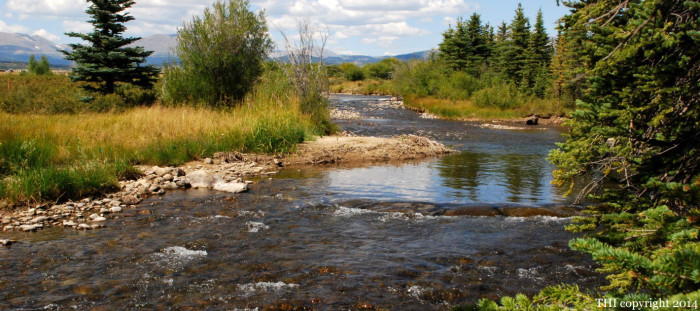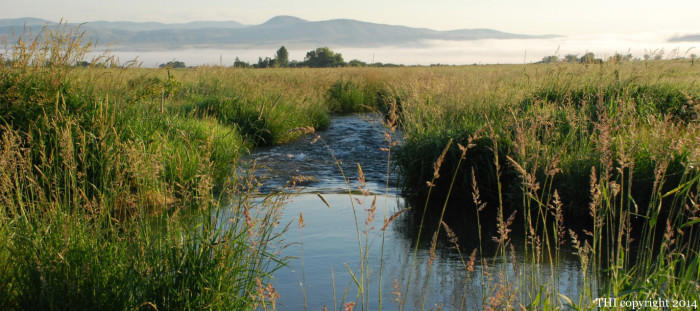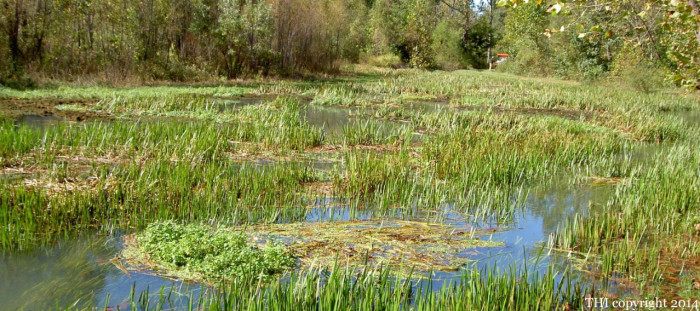The following comes from Field Sport Concepts affiliate Trout Headwaters, Inc. and follows up on our post “True Value of Land”.
Rivers, streams, and wetlands play host to an immense variety of species, many of them microscopic. Whether reducing excessive erosion or enhancing habitat for fish, we need not only tread lightly on the delicate ecosystem that exists, we need to strive to protect and enhance it. Habitat loss and fragmentation are the greatest threats to species biodiversity. In our nation’s more arid environments, the vast bulk of all biodiversity is found in the increasingly fragile riparian buffers of our watersheds. Healthy floodplains and other ecosystem functions rely directly on vital intact buffers. For these important reasons, conservation and restoration activities must increasingly focus on repair, renewal, and preservation of these precious riparian areas.
The long-term benefits associated with restoration are well-documented and include; increased property values, increased revenues associated with tourism and outdoor recreation, increased fish and game revenues, and avoided costs associated with improved ecosystem services. Intact and restored environmental resources have an aesthetic value for which there is higher demand than for degraded resources. Enhanced natural aesthetics from restored ecosystems also attract outdoor recreation enthusiasts and tourists. With a national outdoor recreation industry that generates $289 billion in retail sales and supports 6.4 million jobs per year, there is ample opportunity to capture recreation spending in newly restored areas.
The value of ecosystem services supplied by healthy, functioning, and climate-ready floodplains and wetlands is increasingly understood and appreciated. With tangible values identified, demand for restoration professionals and installation specialists will continue to grow.
The supply of water available for our use is limited by nature. Although there is plenty of water on Earth, it is not always in the right place, at the right time and of adequate quality. We all know water is essential to life. Our rivers, streams and wetlands are the collectors, filters, conveyors, and storage compartments for our nation’s fresh water supply.
Significant human-caused changes to wetlands, rivers and streams have resulted in a dramatic reduction in both water quality and quantity across the U.S. and the world. In natural, undisturbed ecosystems, water falls on vegetation, drips onto the soil, percolates into the soil and slowly migrates down drainage into catchments like streams and wetlands.
Some 70 percent of urban water quality problems are the result of contaminated stormwater runoff. Runoff from developed areas can contain oil, grease, excessive nutrients, pathogens, and heavy metals. Agricultural runoff can similarly degrade rural streams and wetlands. Along with tons of topsoil, agricultural runoff can contain excessive levels of phosphorus, nitrogen and toxic pesticides. The accumulation of these compounds within certain watersheds has caused significant increases in nutrient delivery to important estuaries. Most scientists believe resulting changes in dissolved oxygen levels have caused a severe decline in seafood production along areas of our coasts, including the area known as the Gulf Dead Zone.
On many rivers and throughout the remaining wetlands of the U.S., multiple impacts of development and inappropriate land use are affecting the health, productivity and use values of freshwater resources. Many of the potential effects of disturbance are cumulative.
Within a single watershed we often see impacts from roads, irrigation withdrawals, return flows, agricultural chemicals, forest management activities, recreational use and residential, commercial and industrial development. Restoration activities should be designed to reduce or eliminate these ongoing disturbance factors. Simple changes in management, such as the protection and restoration of riparian areas, creation of buffer strips in cropland, or management of livestock access to riparian areas, can each substantially reduce undesirable cumulative effects.
Each sustainable aquatic resource renewal project matters. Today we face record consumption, uncertain supplies, and growing demands for protection from flooding and pollution. The health and economic effects of a shortage of clean water are matters of great concern.
While the magnitude of the problems facing our freshwater resources can seem overwhelming, each sustainable project that renews and restores healthy floodplain function, even to a portion of a stream, does make a difference. Only one inch of rain falling on one acre represents 27,154 gallons of water. One inch of rain falling on one square mile (640 acres) represents 17.38 million gallons of water to be naturally filtered, conveyed and stored.
Lush, healthy riparian areas are some of the most important ecosystems on Earth, and renewal and repair of these systems has multiple benefits for biodiversity, water quality, bank stability, erosion control, water quality and water quantity. Real ecological function relies on these intact, healthy ecosystems.
As lower-cost, sustainable, vegetative approaches to aquatic resource renewal and repair become more accepted and trusted, we will begin to see real progress in the fight to save our freshwater resources.
To learn more about how restoring aquatic resources on your property can help enhance its economic and aesthetic value contact Trout Headwaters, Inc. at 800-218-8107 or Field Sport Concepts at 434-979-3846.



